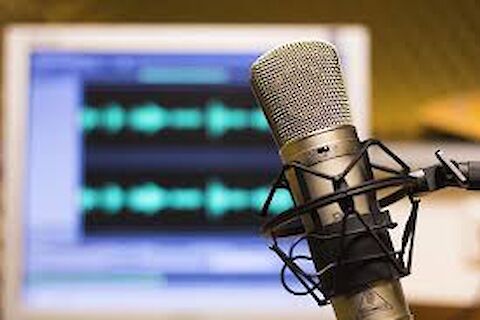

People are always looking for new ways to investigate the paranormal. From new devices that are invented specifically for ghost hunting through to using 'old tech' that is traditionally made for something else, whether you use it or not, typically equipment makes up a big part of modern-day paranormal investigating. One of the 'new' things I have seen people doing recently is using binaural microphones, 360-degree directional microphones, and even ambisonic mics during an investigation. How are these different from listening with a normal recorder or microphone and why would someone use it? Let's explore it further.
What is a binaural microphone?
From the words of the developer 3dio
3Dio microphones accurately capture the sound of a recording space. Providing a fully immersive soundscape, they transport the listener into the room as if they were in the studio during the recording. Record an orchestra or a choir and surround the listener with music from all angles for truly captivating experiences.
The Free Space captures sound just like we hear sound in the real world with our own ears. When you listen to a recording captured with the Free Space using headphones or 3D capable speakers, you hear the sound as if you were there at the time of recording. The effect is so powerful because the Free Space design is based on 13+ years of research into binaural technology and human hearing.
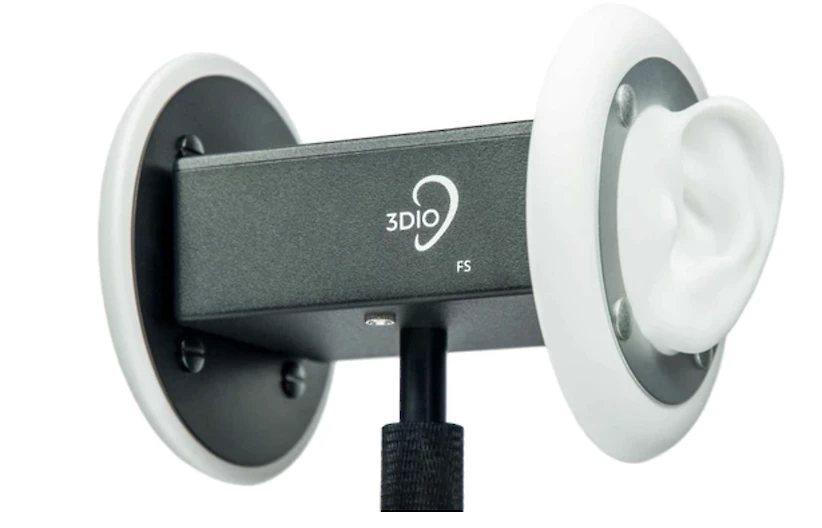
So essentially what you have here is a microphone in between two plastic ears so that it reproduces the sound that a human would hear. You will have seen this exact device being used on some paranormal shows on both television and YouTube.
The below diagram indicates the difference between stereo sound and binaural sound which are often confused
Binaural sound is not to be confused with conventional stereo sound. Stereo audio allows for localization to the left and right upon playback. With binaural, a listener can localize sound sources in front of them, behind them, above and below. Stereo does not factor in the natural ear spacing or “head shadow” of the head and ears. These things happen naturally as a person listens, generating their own ITDs (Interaural Time Differences) and ILDs (Interaural Level Differences). Stereo recording is not capable of capturing these ITDs and ILDs.
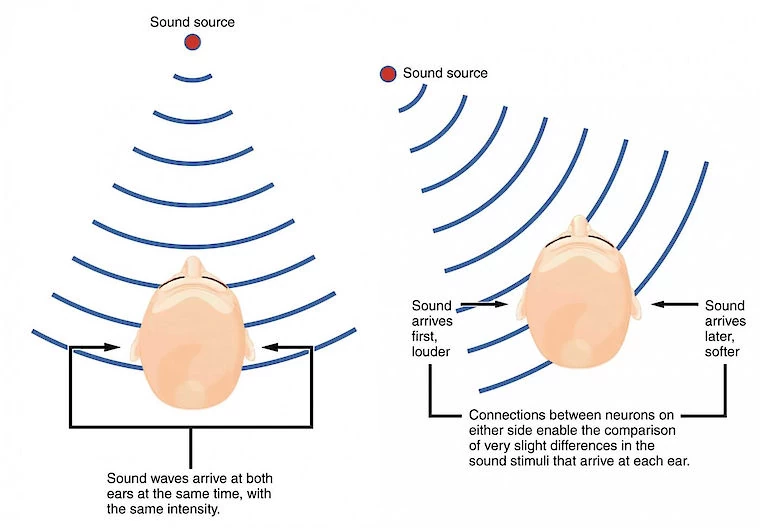
https://hookeaudio.com/what-is-binaural-audio/
How is this different to a digital recorder?
The big difference here is that in a lot of cases, the digital recorders we use only have one microphone. Binaural recording uses 2 microphones which gives you 3D stereo sound. 3D sound is a really big thing at the moment, especially for Virtual Reality experiences so it should be of no surprise that this tech has made its way into the paranormal world. A lot of people argue that they hear things differently to how it is recorded or may even hear things that are not picked up by a recorder. Even though it records in the same way that we hear, the sound is amplified so there is potential to pick up things we did not hear. It is really just a different method of recording to hopefully capture something.
360-degree recording
One of the devices that was a big hit with a lot of investigators over the past 2 years was a 360-degree parascope device that could apparently detect static electricity changes and light up and literally point in the direction that it was picking up the change. 360-degree camera devices have followed as well as 360-degree laser grids and energy detectors. Of course, it is no surprise that people also want to be able to record in 360 degrees as well. In a paranormal investigation, if you have a microphone pointed to only one section of the room and something happens behind you, it may be faint or not caught at all by your recorder. This format allows you to pick up everything around you. This is not necessarily for everyone as it can pick up almost every sound - even those you may not hear with your own ears

Ambisonic recording
360 degree is similar to ambisonic recording but is a little different. While both record with 4 channels, Ambisonic recording can be compared to surround sound but instead of just recording everything around you like 360 does, it also records everything above and below as well. It is described as a full spatial sphere that covers everything around you. This again will not be for everyone because you will pick up every single sound. If you are going to review audio afterward, it could be very difficult to separate something obscure from something natural. For live listening or burst sessions, you can review on the spot however, it could be useful.
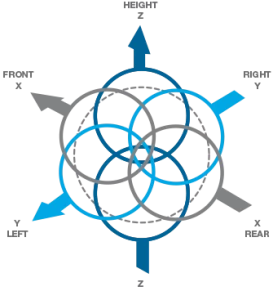
Image Source https://news.harman.com/blog/dimensional-sound-technologies
Is there a device that does it all?
The Zoom H3-VR recorder is one such device people are getting onto that can be used to record in all 3 environments, however, it will set you back a few hundred dollars.
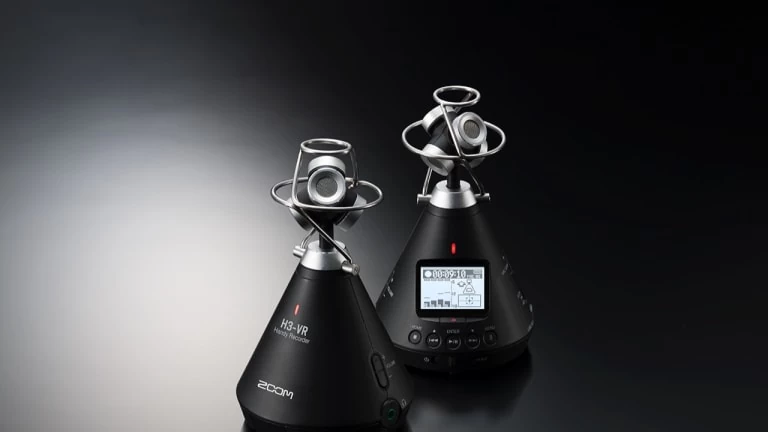
Ambisonics Audio for VR
The H3-VR’s 4-capsule Ambisonic mic captures precise 360-degree VR audio recordings up to 24 bit/96 kHz. And without ever connecting to a computer, the onboard decoder allows you to export Ambisonics B-format files directly.
Binaural 3D Stereo
The H3-VR also records stereo binaural WAV files up to 24 bit/48 kHz. Stereo binaural provides a hyper-realistic spatial recording that enhances 2D productions with 3D audio.Standard Stereo
The H3-VR even offers standard stereo recording for recordings that will be played out of speakers rather than headphones.5.1ch Surround for Video
Free to download, ZOOM Ambisonics Player software can easily convert Ambisonics audio to a 5.1ch surround file that is pre-aligned to the proper speakers, and is exported to your video or audio editor for syncing with standard video.
Live Streaming 360
The H3-VR also enables you to live stream events in 360 degrees so that wherever your fans are, they’ll have access to the best seats in the house.https://www.zoom-na.com/products/field-video-recording/field-recording/zoom-h3-vr-handy-recorder
Parabolic Microphones
In the past, people used a parabolic microphone to listen to or record their sound. You have probably used or seen one yourself on an investigation. It looks like a Sattelite dish and it would allow a person to hear at frequencies well above and below what the human ear would pick up. It works a bit like a gun and you point it in the direction you wish to hear while pressing a trigger button. As technology advanced, people went from using these to live listening directly through their digital recorders or microphones while recording at the same time. One of the downfalls in cheaper models that ghost hunters often use can be that you can only listen and not record so you are relying on a person to tell you if they heard something and you have to take their word for it. This is why a recorder is more ideal.
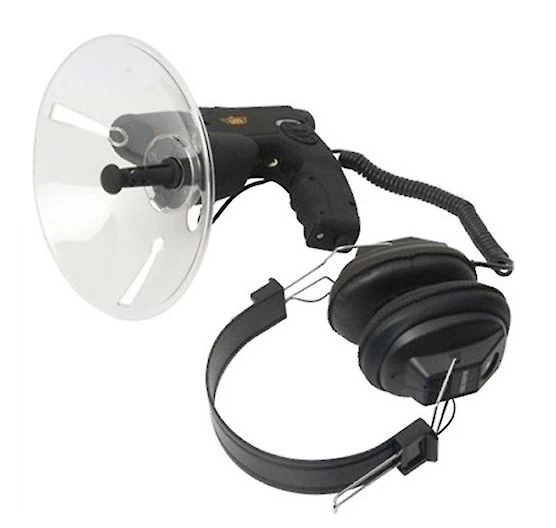
Parabolic Microphone from Amazon
I do not have one of these devices (yet), however, it is on my wish list. I have seen some people create their own 'ears' to create a binaural experience for microphones by using a 3D printer so this is certainly something you could try as well if you are handy with a 3D printer. I will even go one further and point you in the right direction with a link

3D PRINTING BINAURAL MICROPHONES
https://hackaday.com/2015/06/28/3d-printing-binaural-microphones/
In theory, you could also create directional tubes to click into your recorder to enhance your recordings to 360 degrees and possibly ambisonic as well if you are handy enough. I have kept the above explanations very simple based on my understanding of the technologies as I am not a sound engineer, so I am not going to pretend to be an expert in sound. I can however see the benefit in using such techniques for paranormal investigating. It is really no different than a traditional recorder, just more advanced so if you are able to why not give it a try? You will soon find out if there is any difference or benefit to it.
Expect to see a lot more of these techniques filtering its way through investigations (if you don't do it already). I think binaural listening in particular will be one of the trends for 2021 (that is my prediction anyway). I did originally predict it for 2020, however many of us didn't get to investigate much!
What do you use or do you have some ideas on how you can incorporate recording sound into your investigating?
If you enjoy LLIFS, consider buying me a book (otherwise known as buy me a coffee but I don't drink coffee and I LOVE books). Your donation helps to fund the LLIFS website so everyone can continue to access great paranormal content and resources for FREE!

Top pages with similar subjects
Don't forget to follow the Facebook page for regular updates
Join the mailing list to receive weekly updates of NEW articles. Never miss an article again!
Buy the latest and past issues Haunted Magazine
Check out the books written by LLIFS